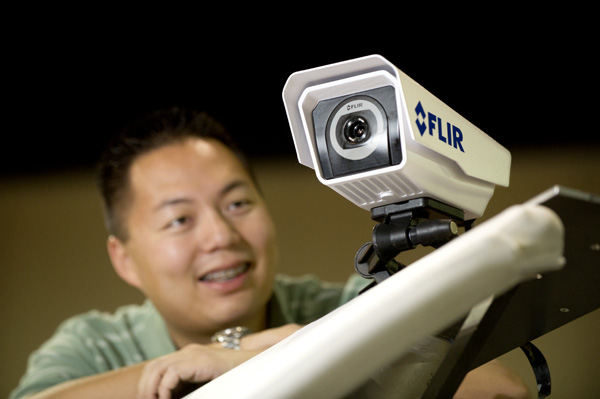Flir is showcasing a new line of its FC-Series of thermal cameras that eliminate the problems associated with glare, darkness, vehicle headlights, shadows and wet pavement. The cameras replace legacy optical cameras and can be dropped in and used with existing traffic management infrastructure and software.

Dan Dietrich FLIR Business Development Manager. "The thermal cameras eliminate the weather variable"
“The biggest problem with vehicle detection systems is always Mother Nature. Our thermal cameras eliminate the weather variable,” said Dan Dietrich, Business Development Manager for Flir.
Flir’s signal detection and ITS cameras detect the heat signatures of vehicles, cyclists and pedestrians and relay that information back to existing traffic management systems. The cameras are based on the company’s battlefield thermal imaging technology used by the U.S. military and are specifically tailored for transportation applications.
Flir tested the cameras in real-world transportation applications in the field before making them publically available, and because of their origin in battlefield conditions the cameras are extremely robust, including a weather-proofing casing and surge protection. They also come with a ten-year warranty on the detectors.
According to Dietrich, the cameras can be used for incident detection, traffic flow monitoring and vehicle counting. Launched last year, Flir FC-Series thermal cameras are deployed with more than 100 transportation agencies in nearly all 50 states.
www.flir.com/traffic











